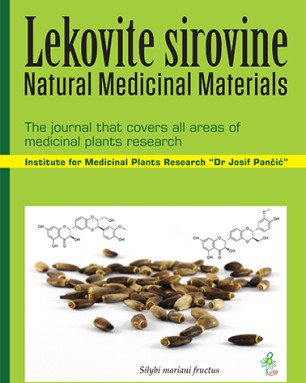Institute for Medicinal Plants Research “Dr. Josif Pančić” , Belgrade , Serbia
Faculty of Tehnology, University of Novi Sad , Novi Sad , Serbia
Faculty of Tehnology, University of Novi Sad , Novi Sad , Serbia
Institute of Field and Vegetable Crops , Novi Sad , Serbia
Institute of Field and Vegetable Crops , Belgrade , Serbia
Institute of Field and Vegetable Crops , Novi Sad , Serbia
In this study, water and various concentrations of ethanol in water (30 %, 50 %, 70 %, and 90 %) were used as a solvent in the extraction of two different samples of hemp (Cannabis sativa L.). The extraction yield, total phenols content, total flavonoids content, antioxidant activity, and reductive capacity were determined in the obtained extracts. The extraction yield was from 8.16 to 19.56 %, the content of total phenols was in the range from 5.85 to 17.05 mg GAE/g dw, and content of total flavonoids was in the range from 5.85 to 9.25 mg CE/g dw. Antioxidant activity was tested by DPPH assay and EC50 values were from 0.1331 to 0.7563 mg/mL, while EC50 values obtained by reducing power test ranged from 0.4450 to 1.1980 mg/mL. Ethanol/water mixture (50 %) was determined to be the best solvent for the extraction of phenolic compounds from both hemp samples. Total phenols content in 50 % ethanolic extracts were 17.05 mg/g dw and 9.25 mg/g dw for young and mature hemp, respectively.
This is an open access article distributed under the Creative Commons Attribution License which permits unrestricted use, distribution, and reproduction in any medium, provided the original work is properly cited.

The statements, opinions and data contained in the journal are solely those of the individual authors and contributors and not of the publisher and the editor(s). We stay neutral with regard to jurisdictional claims in published maps and institutional affiliations.